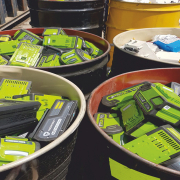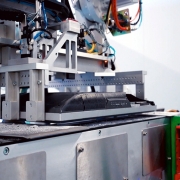Textiles Division: Industry Must Capitalize on “Heightened Interest” in Fashion Recycling
The textiles recycling industry is “so much better” than current media narratives generally imply because “it hasn’t been aggressive enough about putting forth its case”, the latest BIR Textiles Division webinar on November 9 was told by prominent recycling author and columnist Adam Minter.
He urged recyclers to “open your doors” and invite journalists to witness the industry’s activities at first hand. “The good news is that there are a lot of journalists, especially in the fashion press, who want to tell a good story about fashion/apparel recycling,” he said. “I really encourage you to do this now because there is such a heightened level of interest out there, right now.”
Perceptions can certainly be changed when stakeholders see for themselves the detailed sorting conducted by experts in the field, agreed Alan Wheeler of the UK’s Textile Recycling Association (TRA), an organization which has recently organized stakeholder visits to sorting plants.
Media-fuelled misconceptions are particularly pronounced when it comes to used clothing exports to emerging economies. And yet, according to the BIR Textiles Division’s President Martin Böschen of Switzerland-based TEXAID Textilverwertungs AG, estimates suggest that around 100 pieces of second-hand textiles exported to a developing country replace some 50 to 70 pieces of new textiles, thus delivering a “quite substantial” environmental benefit. Mr Minter urged the industry to disseminate such data because “these numbers tell a very important story”.
In North America and Europe, a new customer base is emerging that “is buying second-hand for environmental reasons” rather than on the grounds of cost. Perceptions have shifted in these parts of the world over recent years as people realise the content of their closets “has value”, added Mr Minter. “It has increased the status of second-hand in their eyes. And I tend to believe that it is going to shift how people perceive the export of textiles to emerging markets as well.”
Throughout Africa, added the guest contributor, “one of the really exciting things is that second-hand clothing is an extraordinarily important source of female entrepreneurs”. Mr Wheeler of the TRA took the opportunity to underline that “our industry helps to promote gender equality”.
The panel discussion moderated by Mr Wheeler also featured Petra Schweiger, Program Manager of the Accelerating Circularity Project in Europe. In her earlier guest presentation, she explained that her organization’s mission is to establish circular textile-to-textile systems, involving either mechanical or chemical recycling, that use the embedded value and resources in existing textiles for new products. The goal is to integrate circularity directly into current supply chains “and to scale quickly”.
Actions taken to date have included: teaming up with a data analyst to map post-industrial and post-consumer material flows along value chains; and development of guidelines showing the limits of what can and can’t be used as a means of benefitting, for example, sorters and design teams. Smaller focus groups are addressing products that, to date, have proved difficult to process, such as footwear and laminated garments.
It is crucial that “circularity becomes commercially viable” and that genuine business opportunities are created, insisted Ms Schweiger. She also emphasized the importance of collaboration in ensuring resilient sustainability, adding that her organization works as a “knowledge provider, connector and facilitator” with textile collectors, sorters, pre-processors, recyclers, yarn spinners, fabric mills, garment manufacturers, brands and retailers.
Source: BIR (Brussels, November 10, 2021)






